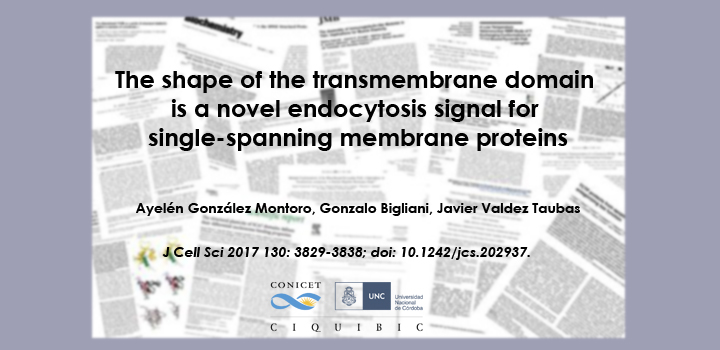González Montoro et al. J Cell Sci 2017
Endocytosis is crucial for all cells as it allows them to incorporate material from the extracellular space and control the availability of transmembrane proteins at the plasma membrane. In yeast, endocytosis followed by recycling to the plasma membrane results in a polarised distribution of membrane proteins by a kinetic mechanism. Here, we report that increasing the volume of residues that constitute the exoplasmic half of the transmembrane domain (TMD) in the yeast SNARE Sso1, a type II membrane protein, results in its polarised distribution at the plasma membrane. Expression of this chimera in strains affected in either endocytosis or recycling revealed that this polarisation is achieved by endocytic cycling. A bioinformatics search of the Saccharomyces cerevisiae proteome identified several proteins with high-volume exoplasmic hemi-TMDs. Our experiments indicate that TMDs from these proteins can confer a polarised distribution to the Sso1 cytoplasmic domain, indicating that the shape of the TMD can act as a novel endocytosis and polarity signal in yeast. Additionally, a high-volume exoplasmic hemi-TMD can act as an endocytosis signal in a mammalian cell line.
Authors: Ayelén González Montoro, Gonzalo Bigliani, Javier Valdez Taubas



